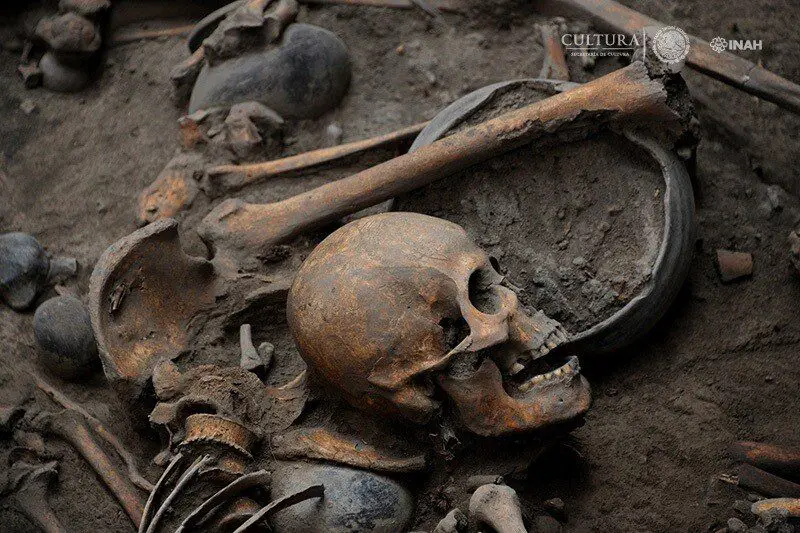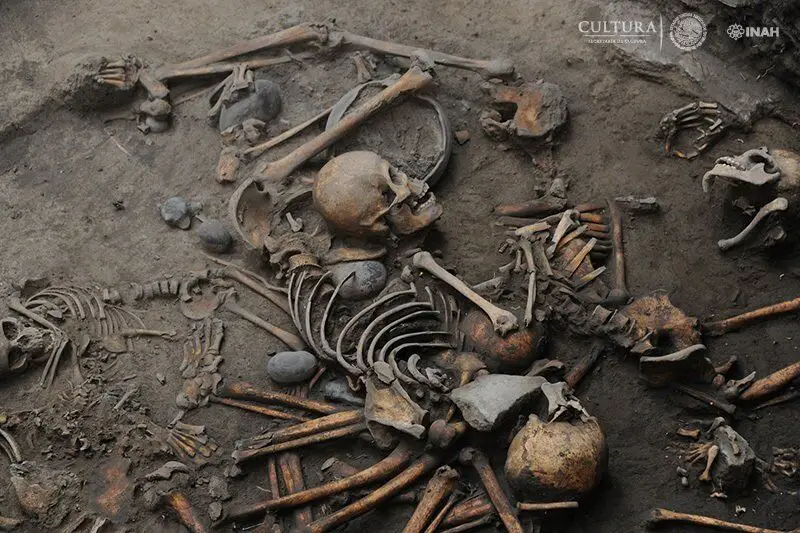A spiral formation of human remains has been unearthed in an ancient burial pit during excavations at a Pre-Aztec village in the south of Mexico City.
The discovery, dating from roughly 2400 years ago was made during works by the National Institute of Anthropology and History (INAH) at the Pontifical University of Mexico.
Anthropologists Lucía López Mejía and Sonia Rodríguez Martínez have confirmed that most of the ten burials were adolescents, although an adult, infant and the remains of a month-old child has also been identified.
They also confirmed that at least two of the burials had intentionally deformed skulls and some of the skeletons teeth had also been intentionally malformed.
Whilst the causes of death are still under investigation, the method of carefully positioned into a spiral formation with linked arms suggests a ritualistic component involved.
This theory is reinforced by the placement of offerings, from earthenware bowls and pots (cajetes & tecomates), and in some burials where ceramic spheres and stones were placed in the skeletons hands.
After five months of rescue work at the UPM, the INAH team has located more than 20 other trunk-shaped pits, of which six contained individual burials of mostly adults.







